
CSI: Deadly Intent
Written by: Rik
Date posted: September 4, 2016
- Genre: Adventure
- Developed by: Telltale Games
- Published by: Ubisoft
- Year released: 2009
- Our score: 5
And so we return to the CSI series, by this point firmly in the hands of adventure franchise gatherers Telltale. They’ve had long enough to get things right, but there was little indication in their last effort, Hard Evidence, that they had any inclination to do so. Still, I figured it was worth plugging on, more in hope than expectation, to see if they tackled any of the underlying interface and design issues, whether Deadly Intent offers any more than incremental improvements over their previous efforts, and whether it might actually be a decent CSI game – or at least as good as the ones on the DS.
The best game based on the shows, that I’ve played, is Deadly Intent‘s counterpart – The Hidden Cases – on the Nintendo handheld, so I did reserve a small amount of optimism for the possibility that this might measure up: perhaps I’d previously been unfair in expecting too much from the older PC titles in comparing them to a relatively recent DS game, and maybe it was with the release of Deadly Intent that the series really took a leap forward.
As with my other hopes for the game, this one was soon dashed, and, sadly, the only real link between the PC and DS titles is the loop of techy music that plays in the lab. While I do *love* that music to an almost irrational extent, it still doesn’t quite seem the same here – maybe there was something about the slightly lower sound quality on the DS that kind of made it better. [Sounds like you’ve gone mad to me – FFG reader]. Anyway, in the interests of not rambling on wistfully about The Hidden Cases, I’ve decided to not to go on about it again here and will try and do a proper – separate – write up at some point.
So, as I’ve sort of let slip, major improvements are off the cards in Deadly Intent, and instead we have the same format of investigating a scene, lab work and interrogation, held together by a slightly clunky interface. As before, the processing of scenes and evidence seems imprecise, and navigation of the former still uses the same strangely restrictive method – click to zoom in, then move the mouse left and right to rotate the view along a fixed axis.
It’s all pretty lightweight stuff. You can make it harder by turning off hints and help, although that would be a vaguely masochistic move that doesn’t necessarily make for more fun. There are occasional moments of wandering around wondering how to move a case forward, and even if you choose not to talk to your partner on the case, extended periods of aimless farting about prompt an email alert from your seemingly omniscient supervisor, Catherine Willows, telling you what to try next. The lab tasks themselves are pretty straightforward, too, unless you listen to the tutorials, which not only appear at random, regardless of whether you’ve turned them off, but also make the task at hand seem much more complicated than it actually is.
There’s been some attempt to improve interrogation, and during questioning you now have to disprove a suspect’s untrue statements with (wait for it) EVIDENCE. It has to be the correct evidence, of course – you can’t just whip out the same soggy condom each time in an attempt to intimidate them – although most of the time it’ll be fairly obvious which of the shortlisted options is the correct one. Later in the game, you might have two or more very similar pieces to choose from, in an attempt to trick you, and have to work out whether it’s an item, or a fingerprint on the item that you need to click on (or, you can just guess, without too many negative consequences). Interrogation nevertheless remains rather static, and the age-old problem of having suspects sitting around, even if there’s nothing to say to them, remains.
There have been attempts to make the game in general a bit more dynamic, with other lab members occasionally involving themselves in your cases, and vice versa: you might, for example, spy another member of the team in the lab and they’ll ask for your help with the piece of evidence they’re working on for another case. It’s nice when it happens, although there’s rarely a buzz of activity: the lab is always eerily quiet, and there’s no sign of any of the lab technicians. At times, it seems as if the presence of other characters is almost solely to make up for the fact that your own is mute: any questions you ask are shown in text form only, and you’re just referred to as “the new hire” so there’s little potential for back and forth. When you need to feel as if you’re working as part of a team, you have to have Catherine pop in and ask your partner how it’s all going.
As with previous games, the approach is not of hardcore problem solving, with actions and mistakes having consequences, or with you working under any kind of time pressure: you won’t pursue the wrong suspect, or let them get away because you missed something. Instead, it’s more of an interactive story: rather than actively solving the case, you’re guided down the correct path until you eventually get to the end.
Whatever the merits of each approach, if you’re going to do the latter, it pays to admit you’re doing so and really go for it rather than pretending you are really doing clever science and investigation. Progress could be a bit more staged, so it flows more like an episode of the TV show and there’s less wandering around aimlessly. While the show manages to hide the fact that it speeds up many bits of each case, using transitions and cutting between characters to indicate the passage of time, here you’re effectively following the same character’s every move: and between the revisiting of crime scenes and dragging in the same suspects for inconsequential chats, it seems as if everyone and everything exists purely to be at your beck and call, in order for you to solve the case.
That pretty much leaves the cases themselves. If you’ve watched the show for any period of time, the kind of stuff on offer – a sleazy motel here, a faded TV star there – will be familiar. That said, they are still reasonably satisfying, and I particularly liked the higher stakes of the finale, with more colleagues on hand to help as the final murder is linked to a cold case. (The final cases do tend to be the best, although I wasn’t a fan of the one in the last game, a confusing bullet strewn crime scene that Grissom basically just talked you through).
There are odd ridiculous moments (at one point a suspect just happens to have sneezed on the jumper of another) and I did have that momentary and vague feeling of unease about law enforcement and assuming everyone is probably guilty of something, gleefully obtaining evidence “in plain sight” and requesting search warrants aplenty. But such things go along with the territory, and I guess that’s the thing about cop shows: suspects almost always do have something to hide.
The acting is, as before, a little uneven, although the presence of Laurence Fishburne (who joined the show as Ray Langston in Season 9) adds a touch of much needed gravitas. Sadly, his case also happens to feature a DREADFUL SHOUTY HUSBAND as a suspect, which only serves to highlight the gulf between the best and worst of the voice performances on offer. Nick, Greg and (fake voice) Catherine also return, alongside newcomer Riley Adams, who appeared in only one season before being unceremoniously written out without much explanation. The character models register the occasional convincing flicker of emotion but for the most part are fairly mannequin-like.
Overall, Deadly Intent remains at the low end of middling. You certainly won’t get stuck, and there’s a level of satisfaction to be gleaned from idly clicking through a few cases, pretending to do the science and seeing how it all unfolds. Even by these standards though, it could be better, and it’s certainly frustrating to note the lack of real progress since Telltale took over the franchise. But they did make one more. So perhaps that’s good. [Oh for God’s sake when will you learn – FFG reader].

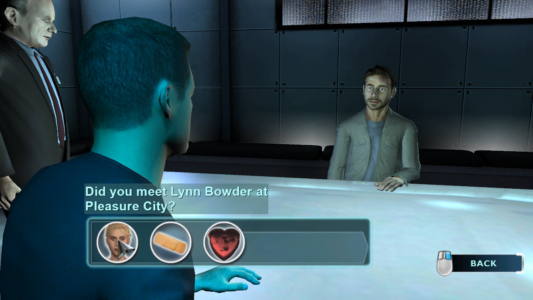
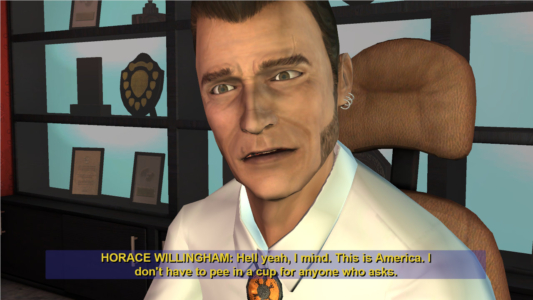
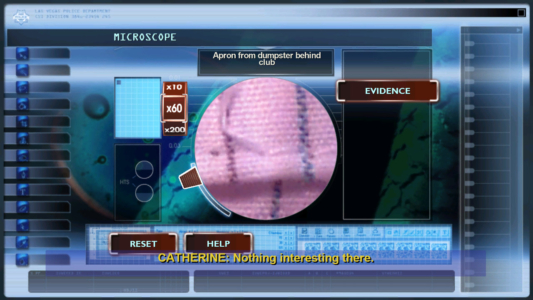
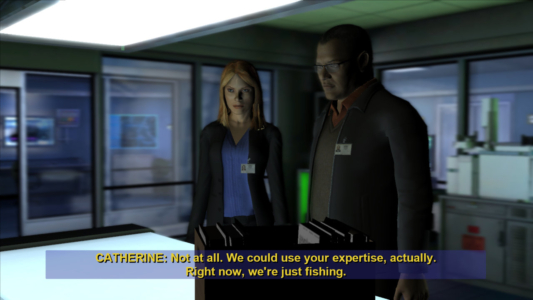
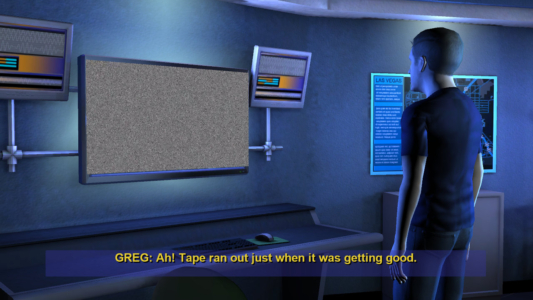

 Posts
Posts